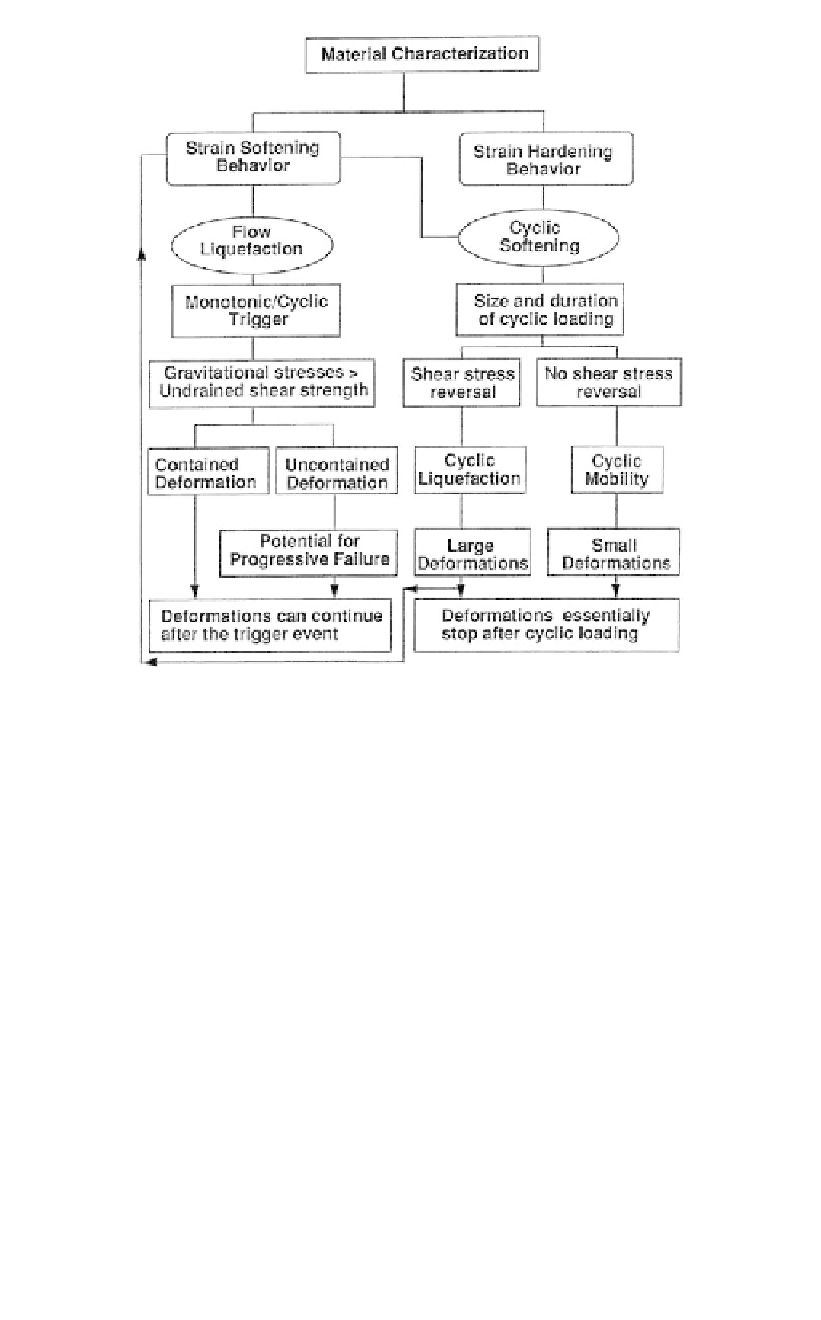Environmental Engineering Reference
In-Depth Information
Figure 12.14.
Suggested flow chart for evaluation of soil liquefaction (Robertson, 1994; Robertson and
Wride, 1997).
(b)
Cyclic liquefaction
- Requires undrained cyclic loading during which shear stress reversal occurs or zero
shear stress can develop (i.e. occurs when in-situ static shear stresses are low com-
pared to cyclic shear stresses);
- Requires sufficient undrained cyclic loading to allow effective stresses to reach essen-
tially zero.
-At the point of zero effective stress no shear stress exists. When shear stress is
applied, pore pressure drops as the material tends to dilate, but a very soft initial
stress strain response can develop, resulting in large deformations;
- Deformations during cyclic loading can accumulate to large values, but generally
stabilize when cyclic loading stops. The resulting movements are due to external
causes and occur only during the cyclic loading;
- Can occur in almost all saturated sands provided that the cyclic loading is suffi-
ciently large in magnitude and duration;
- Clayey soils can experience cyclic liquefaction but deformations are generally
small due to the cohesive strength at zero effective stress. Rate effects (creep) often
control deformations in cohesive soils.
(c)
Cyclic mobility
-
Requires undrained cyclic loading during which shear stresses are always greater
than zero, i.e. no shear stress reversal develops;
-
Zero effective stress will not develop;

